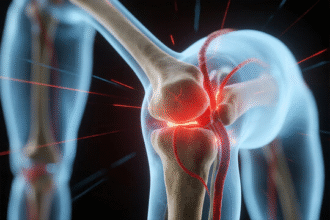Key Points
- Autosomal recessive disorder of copper metabolism leading to toxic copper accumulation.
- Presents with hepatic, neurological, and psychiatric symptoms, often in adolescence.
- Diagnostic hallmarks: low ceruloplasmin, elevated 24-hour urinary copper, Kayser-Fleischer rings.
- First-line treatment: copper chelators (D-penicillamine, trientine) and zinc salts.
- Early detection and lifelong therapy are critical to prevent irreversible organ damage.
Introduction
Wilson’s disease is a rare inherited disorder caused by mutations in the ATP7B gene, which encodes a copper-transporting ATPase. Impaired biliary copper excretion results in copper accumulation, predominantly in the liver and brain. Without treatment, Wilson’s disease can be fatal, but early diagnosis and management can lead to excellent long-term outcomes.
Epidemiology
- Prevalence: Approximately 1 in 30,000 individuals worldwide; carrier rate ~1 in 90.
- Age of onset: Usually between 5 and 35 years, but may present later or in childhood.
- No significant sex predilection.
Genetics and Pathophysiology
- Mutations in ATP7B impair hepatic copper transport and excretion into bile.
- Copper accumulates in hepatocytes, causing oxidative damage, cell death, and cirrhosis.
- Excess free copper spills into blood and deposits in other organs (brain, cornea, kidneys).
- Neurological injury arises from copper-mediated oxidative stress in basal ganglia.
Clinical Presentation
Hepatic Manifestations
- Asymptomatic hepatomegaly or elevated liver enzymes.
- Acute hepatitis-like picture, fulminant hepatic failure.
- Chronic liver disease: cirrhosis, portal hypertension, ascites.
Neurological and Psychiatric Manifestations
- Movement disorders: tremor (‘‘wing-beating’’), dystonia, chorea, parkinsonism.
- Dysarthria, dysphagia.
- Psychiatric symptoms: depression, personality changes, cognitive decline.
Ocular Findings
- Kayser-Fleischer rings: greenish–brown corneal deposits visible on slit-lamp exam.
Diagnostic Evaluation
- Serum ceruloplasmin: typically <20 mg/dL (normal 20–40 mg/dL).
- 24-hour urinary copper excretion: >100 μg/day suggests Wilson’s disease.
- Hepatic copper quantification on liver biopsy: >250 μg/g dry weight.
- Slit-lamp examination for Kayser-Fleischer rings.
- Genetic testing: identification of pathogenic ATP7B variants.
Differential Diagnosis
- Chronic hepatitis B or C.
- Hemochromatosis.
- Autoimmune hepatitis.
- Neonatal cholestasis syndromes.
- Other movement disorders (Parkinson’s disease, Huntington’s disease).
Management
Chelation Therapy
- D-Penicillamine: 750–1,500 mg/day in divided doses; monitor for adverse effects (nephropathy, bone marrow suppression).
- Trientine: alternative chelator for penicillamine-intolerant patients.
Zinc Therapy
- Zinc acetate: 150 mg/day in divided doses; induces metallothionein in enterocytes to block copper absorption.
Liver Transplantation
- Indications: fulminant hepatic failure, decompensated cirrhosis unresponsive to medical therapy.
- Curative for hepatic copper overload.
Nursing Considerations
- Monitor liver function tests, renal function, and blood counts regularly.
- Assess neurological status and mental health.
- Educate on adherence to chelation and dietary copper restriction.
- Provide support for dietary modifications: avoid high-copper foods (shellfish, nuts, chocolate).
- Watch for and report adverse drug reactions promptly.
Prognosis
- With treatment, survival approaches normal life expectancy.
- Neurological symptoms may improve but can leave residual deficits if therapy is delayed.
Patient Education and Lifestyle Modifications
- Lifelong medication compliance is mandatory.
- Avoid copper-rich foods and supplements.
- Regular follow-up with hepatology and neurology specialists.
- Family screening: Siblings of affected individuals should undergo biochemical and genetic testing.
References
- Roberts EA, Schilsky ML. A practice guideline on Wilson disease. Hepatology. 2003;37(6):1475–1492.
- European Association for Study of Liver. EASL Clinical Practice Guidelines: Wilson’s disease. J Hepatol. 2012;56(3):671–685.
- Coffey AJ, Durkie M, Hague S, et al. A genetic study of Wilson’s disease in the United Kingdom. Gut. 2013;62(11):1576–1583.
- Ala A, Walker AP, Ashkan K, Dooley JS, Schilsky ML. Wilson’s disease. Lancet. 2007;369(9559):397–408.







